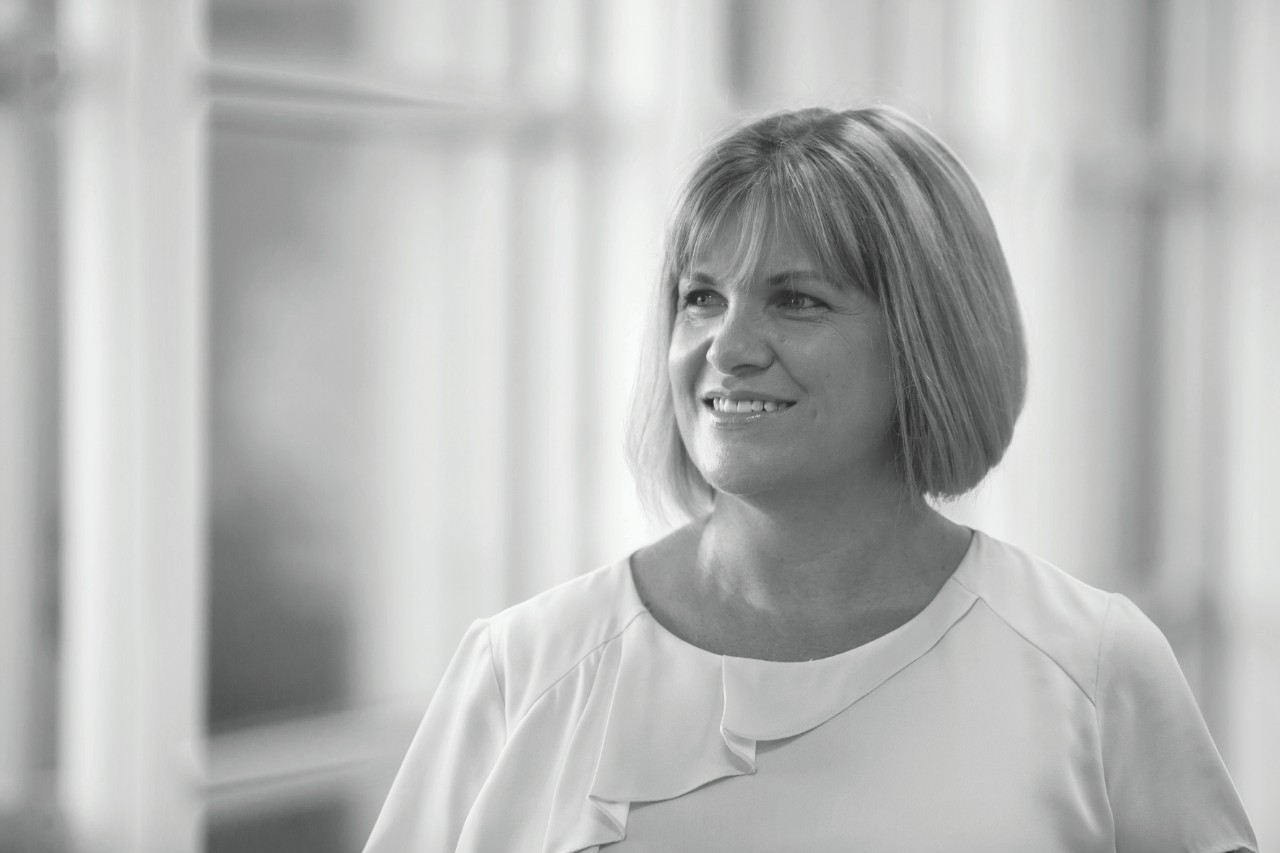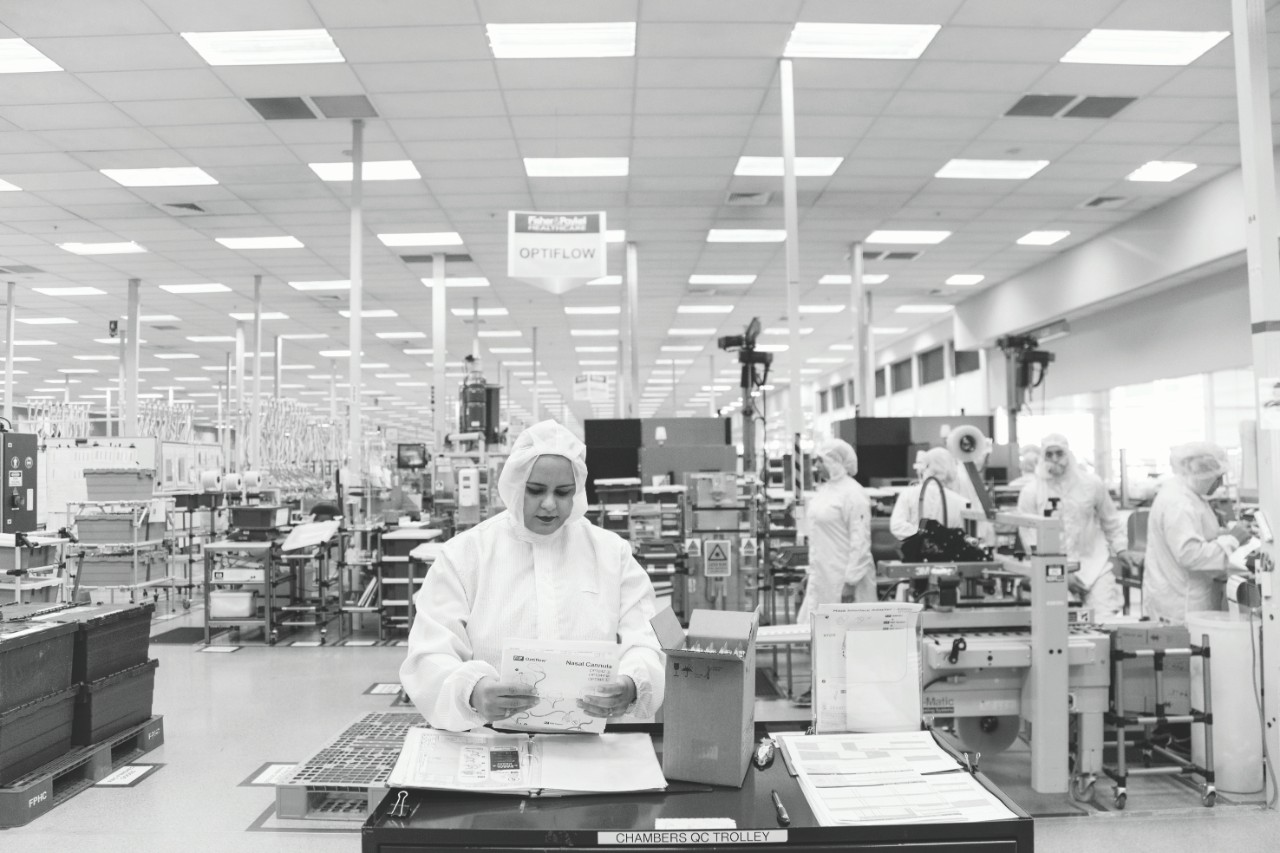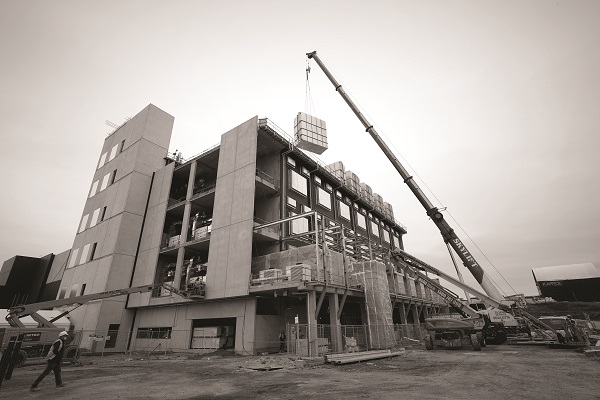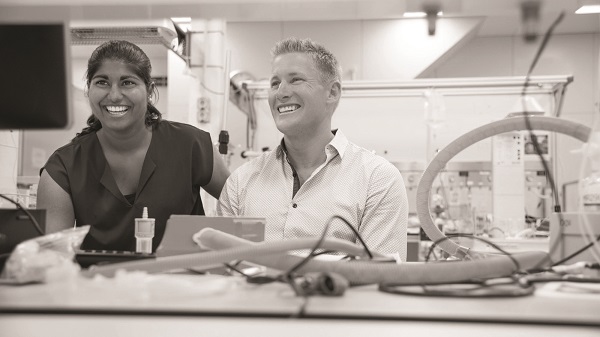- publish
A verification email has been sent.
Thank you for registering.
An email containing a verification link has been sent to .
Please check your inbox.
An account with your email already exists.
Virtual round table: Lessons from the COVID-19 pandemic
Listed@ASX Summer 2020/2021
This time last year, executives could not have dreamed they would spend 2020 grappling with the first major pandemic in a century. But that’s exactly what has transpired. In this roundtable, market participants discuss how listed businesses have weathered the COVID-19 storm and engaged with the market over this time. We explore what shareholders wanted to know during this time, how listed companies have given the market guidance and what they would do differently if they had their time again.
Alexandra Cain, moderator, Listed@ASX: Alex, as NEXTDC is a data centre and IT services experienced huge growth as people moved to working from home, your services have never been more in demand. Tell me about your experience communicating to the market during the pandemic?
Alex Teo, vice president, strategy and investor relations, NEXTDC ASX:NXT : We are fortunate we have a business that’s designed and built to withstand disasters, such as a pandemic. So we have existing operating procedures in place, which all staff are aware of and the moment something like this happens, everyone immediately knows what to do. When it came to communicating with our shareholders, we decided very early on we needed to get the message out there that we were prepared and we’ve always been prepared for this sort of thing to happen. For us, it’s almost business as usual; we’re ready for any disaster scenario.
Nonetheless, along with the rest of the market, we were caught up in the initial equities sell off. So we issued an ASX announcement within a week and a half of the initial lockdown reaffirming our guidance for the 2020 full year. COVID’s impact on us is not significant and as far as we’re concerned, this is business as usual.
We may not have had pandemics in Australia before, but they have happened in other parts of the world including areas in Asia and the Middle East.

Alex Teo, vice president, strategy and investor relations, NEXTDC
The data centre industry is a global industry and we operate in accordance with the highest standards established by the global data centre standards body, the Uptime Institute. So it is part of NEXTDC’s operating manual that we’re prepared for what happens during such events.
Listed@ASX: What about you, Lyndal? Tell me about your experience communicating to the market?
Lyndal York, CFO, Fisher & Paykel Healthcare ASX:FPH : We’re the world’s largest manufacturer for two of the therapies that are used to treat COVID patients. We started seeing demand for these rise from Wuhan in mid-January. We recognised the potential for this to become a worldwide pandemic pretty early on because we had people on the ground there in Wuhan who were delivering our equipment to the hospitals there, as well as training staff.
By the end of January, our crisis response team was working through how we would deal with a global pandemic, anticipating the virus would spread throughout the world. The key for us was increased demand for our products and how we could continue to manufacture and distribute around the globe.

Lyndal York, CFO, Fisher & Paykel Healthcare
"There was confusion about whether we manufacture ventilators, which we don’t. We make humidifiers for invasive and non-invasive ventilators and standalone nasal high flow devices.”
That came with a number of challenges because getting freight and products to and from New Zealand and Mexico, where we manufacture, has been challenging in a situation where demand for some of our products rose five fold during lockdown.
In terms of dealing with the market, it was important to issue more regular trading updates. We have a March year-end and we had given guidance for the March 2020 financial year. In February, we gave an update and upgraded that slightly, given increased demand from China. We gave another trading update in March when the virus spread around the world.
We spent time taking our analysts and investors through what we were doing and the demand we were seeing. They wanted to know whether we could keep up with demand. There was also confusion in the market about whether we manufacture ventilators, which we don’t. We make humidifiers for invasive and non-invasive ventilators and standalone nasal high flow devices. So part of it was educating the market about what we do.
It was important to make clear we are a growing business so we always have capacity for growth. We have a couple of years’ worth of growth in capacity, for instance available space in production facilities and production line capacity. So we were able to ramp up our output very quickly and keep up with demand and get our products out to patients very quickly.
During the lockdown we used Zoom to communicate with investors for the investor roadshow. We made it a really valuable experience by staging the Zoom meetings in our usability lab where we have all our equipment. We have an ICU set up there with our products as well as other hospital products. We hired a video team to help showcase our products and how they are used. Our investors found that really useful.
Listed@ASX: Dion as an investor, how did lockdown pan out for you?
Dion Hershan, managing director and head of Australian equities at Yarra Capital Management and portfolio manager for the UBS Australian Share Fund: We were aware of what was happening in China in January. We have an investment team of 19 and we invest in both debt and equity securities. We cover more than 300 companies and more than a hundred individual investments. So we worked closely with our portfolio companies to learn as much as we possibly could in as short a timeframe as possible.
We’ve modelled many scenarios, but never a pandemic and level four shutdowns.
So we rapidly sorted our portfolios into four different groups: businesses that were beneficiaries of the lockdowns and COVID. We own Fisher & Paykel and NEXTDC, which were significant beneficiaries. A second group of businesses we classified as being indifferent; they would function irrespective of the environment.
Third, there was a group that was temporarily damaged. The final group was companies sent into a hard stop. These businesses were effectively in triage. If you couldn’t open a shopping center, if you couldn’t open a factory, if you couldn’t export, your circumstances were vastly different. Many businesses’ revenue literally evaporated overnight. For this cohort, we were very focused on cash flow, balance sheets, liquidity and whether they could get through this tough environment.
At the time, we did a lot of what I call scrubbing our portfolio – analysing what we own. With crisis comes opportunity, so we also spent time looking for new investments and committing capital where we saw great opportunities as a result of really meaningful dislocation.
Listed@ASX: Can you give me an example?
Dion: Sydney Airport is one. International flights were cancelled and domestic flights were heavily curtailed. But it has 77 years to run on its concession. While the next few years will be extraordinarily tough, it’s a long-dated infrastructure asset which has plenty of time to catch u
Listed@ASX: What have you wanted to know about the companies in which you invest through this period?
Dion: In a word, everything. We wanted to understand short-, medium- and long- term implications. When you go through a seismic event like this, you’re more focused on balance sheets and cash flow than this year’s profits.

Dion Hershan, managing director and head of Australian equities at Yarra Capital Management and portfolio manager for the UBS Australian Share Fund
“With crisis comes opportunity, so we spent time looking for new investments and committing capital where we saw great opportunities.”
We tend to be a long-term investor. So we fully appreciate for most businesses, it was futile to give guidance given how quickly the environment was changing week to week. But we certainly appreciated companies providing us with scenarios or a framework to think about how the business would look under different circumstances.
Listed@ASX: Alex, what did your shareholders want to know and what was challenging about meeting their needs?
Alex: We were in a very unusual circumstance because the pandemic accelerated our plans. We were planning to raise capital anyway and some debt during the second half of 2020 or possibly early 2021. The pandemic pulled this forward because we need to build new data centres and we need a lot of capital to do that. Very early in the pandemic, we launched the biggest-ever equity raising we’ve done. Shareholders wanted to know everything. They wanted comfort everything was business as usual and any negative impacts were well understood.
With respect to our growth plans, we need to buy a lot of heavy, industrial- grade equipment, such as high-end air conditioning units and back-up generators.
Shareholders wanted to know who our suppliers were, what their supply chains looked like and their exposure to hot spots like Italy and China, over and above the usual questions about how we were going to spend our capital. They wanted to know whether we were able to build new data centres and get construction workers on-site, as well as practices we were undertaking to ensure construction workers didn’t become infection clusters. We were as forthcoming as we could be.
Listed@ASX: Was there any movement in the share register during the period?
Alex: Yes, there was. Although, it was difficult to know which investors came onto the register because of the capital raising or because we were catapulted from the ASX200 to the ASX100. That made us much more relevant to some investors, particularly in the US and Europe. All of a sudden, we were on their radar because we became a member of a number of global indices.
Listed@ASX: Lyndal, what were some of your challenges meeting investors’ expectations?
Lyndal: One of the biggest questions was our view of how COVID would play out. But we have no more insight than anybody else working in the health system around what it’s going to do. How the virus impacts our business is not a straight or clear correlation. It depends on precautions governments take and treatments clinicians use.
Optiflow, our nasal high flow therapy, is emerging as an effective form of first line respiratory support. But that doesn’t mean every clinician will use it for every patient. The significance of this for our business is still an unknown. We hope the virus has increased awareness of nasal high flow therapy, but we just don’t know. That’s what our sales and marketing teams will be exploring.

“One of the biggest questions was our view of how COVID would play out. But we have no more insight than anybody else working in the health system around what it’s going to do.”
Listed@ASX: How did you then communicate the potential for the business to investors?
Lyndal: The opportunity for us is the change of clinical practice in treating respiratory distress and respiratory disease. Optiflow nasal high flow is a therapy we’ve been developing for 15 years. But changing clinical practice is slow. You start with clinical data, which shows patients can benefit from being treated with nasal high flow. It reduces the risk of them escalating to higher acuity care and needing to be intubated, which creates a large burden for hospitals and generally has worse outcomes for patients.
We have seen lots of clinical data published and even adopted into practice guidelines, but we’re still working through the change of clinical practice at the bedside.
COVID has helped overcome two of the biggest hurdles to changing clinical practice. The first was placing equipment in hospitals. During the first four months of this financial year, our hardware sales rose by 390 per cent compared to the same period last year.
The second hurdle is clinicians who wouldn’t have experienced this therapy before using it. COVID wards and triage areas are now using Optiflow and seeing for themselves how beneficial this therapy is for COVID patients. It normally takes us a long time to get to that point. That’s where we believe COVID has really helped accelerate that change. We estimate around 50 million patients a year could benefit from nasal high flow.
Listed@ASX: What about you, Alex? Where are your opportunities and how did you communicate that to the market?
Alex: We’re a very long lead time industry. So, sales we make today may not have an impact for as much as 12 to 18 months or even longer. But many investors understand the tailwinds the pandemic could present to our business. If you look at share prices of the big global cloud providers, such as the likes of Amazon, Microsoft and Google, they’re all doing well.
“For us, it’s almost business as usual; we’re ready for any disaster scenario.”
These providers are partners of ours, and for them to continue supporting the growing cloud requirements of Australian businesses, they rely on services like ours. So it’s immediately clear to most investors our business would do very well. We didn’t need to explain to the market where our business growth would come from.
It was more a case of giving investors an indication of just how strong that was and at the same time, particularly with newer investors, ensuring they understood that although we’re seeing demand right now, it’s highly unlikely to affect next year’s revenue or earnings. In fact, the only number that’s going to affect next year’s result is capex. We need to invest a lot more.
Listed@ASX: Dion, from your perspective, what did best practice communication from companies look like through that period?
Dion: It was about companies communicating frequently and transparently. They couldn’t be overly prescriptive because so much was unknown. Some businesses were structural beneficiaries of pandemic- induced trends. So it was about calling that out and managing expectations about how quickly some of those things could play out.
Many investors overreact when you go through a crisis. There was panic in March and April like I’ve never seen before.
Evidence of that was the oil price going negative, which was beyond the realms of what could be considered normal. So it was about sifting through companies and assessing what was temporary disruption and which businesses would normalise and the opportunities that would emerge from that.
There were also businesses in the COVID period we believe were overrunning. By way of example, when you see retailers growing at 40 per cent a year that were previously growing at two per cent to three per cent, it reeks of not being sustainable. We were very conscious of that.
Listed@ASX: Lyndal, what were your shareholders most concerned about at the start of the pandemic and also more recently? Because things have changed dramatically.
Lyndal: At the start, the concern was whether we could keep up with demand, knowing we were the market leader, and whether we could produce enough hardware to treat patients. They wanted to know whether there could be a global issue of mortality because we couldn’t manufacture. The fact we were able to increase production for our hardware devices four or five times in a very short period helped reassure investors. We also spent time ensuring they understood we were able to keep our people and our sites safe so we could continue making product. As an example, in Mexico where we have our manufacturing facility in Tijuana, more than 80 of our employees contracted COVID in the community but we have had zero transmission onsite with the safety precautions we have in place. That gives us and our investors confidence we’ve done a good job protecting our sites.
Now, shareholders want to know about the long-term impact to our business. We have placed a lot of hardware, so we’re likely to see a dip in that area. But we still anticipate selling hardware and sales of consumables associated with that hardware will continue to rise. We’ll also be working very hard to ensure clinicians understand the benefits they’ve seen with COVID patients will apply to non-COVID patients.

“Because we are building for the explosive demand we’re witnessing, shareholders are very keen to know how we’re doing constructing new data centres.”
Listed@ASX: Alex, what are shareholders worried about now for NEXTDC?
Alex: In our case, because we are building for the explosive demand we’re witnessing, shareholders are very keen to know how we’re doing constructing new data centres. We’ve provided guidance for the 2021 full year but can’t provide guidance beyond that, otherwise ASX will have a very close look at that.
A separate interesting observation is that insurance companies are alsocurrently increasing premiums for director and officer coverage and have suggested if we don’t provide guidance, premiums might experience a more modest increase. That’s obviously a negative for the market if insurance companies start dictating to companies how they should or shouldn’t provide guidance. We’ve been very careful to provide guidance to the extent we can and importantly, what is appropriate.
We also play close attention to analyst coverage. We’re covered by 13 analysts. We have a very close look at the numbers, and if any of those analysts are overly enthusiastic or frosty, we make sure we put in phone calls.
How quickly the market thinks we’re going to realise some of the demand that’s expected is something we manage very carefully. But at the end of the day, analysts are entitled to their independent opinion. Some people will persist with the very frosty or a glass-half- full view, whichever they may take. There’s nothing you can do about that, but you try and make sure that the peloton is roughly in the right place.
The other thing we’ve done is regularly made the CEO accessible, because it’s important the market feels a sense of assurance directly hearing from him.
Listed@ASX: Lyndal, how are you approaching guidance now?
Lyndal: We thought long and hard about guidance, particularly because we have a March year-end. We debated whether we should give guidance at all because we can’t forecast or predict what COVID’s going to do. So we’ve done something quite different, which is build a set of assumptions and modelled how that scenario is likely to affect our financial results. We combine this with a trading update for the current year to allow analysts and investors to build their own set of assumptions and estimates. That way, we feel confident and comfortable the market is fully informed. We have changed our set of assumptions as the situation has changed.
Listed@ASX: Dion, what’s keeping you awake at night?
Dion: We’re still in a really volatile environment. But in some respects, if you look at the stock market, there’s a sense of complacency. The stock market collapsed in March and the magnitude of the rally subsequently has been extraordinary.
Now, we’re at a junction where valuations are reasonably stretched. Two things are holding up the market: extraordinarily low interest rates, which may be with us for some time, and an almost bottomless pit of money for technology companies and high-growth businesses. What we need to ascertain now is whether fundamentals will catch up. They will for some but not all businesses.
Listed@ASX: Alex, what would you do differently if you had your time again?
Alex: Our view is dominated by the capital raising, which we did just as the market was coming out of that period of panic. We knew we needed capital. But we had no idea which way the market would go. At that time, we just raised equity and we raised as much as we could because we thought it was time to batten down the hatches, raise money and then continue to build data centres. We’ve got great confidence in our prospects in the long-term.

“Having virtual meetings in our usability lab, showing our products and explaining we don’t do ventilators, but being able to show investors what a ventilator is, was powerful.”
Fundamentally, as an infrastructure company, we try to ride out things like this. But with the twenty twenty vision hindsight gives you, we might have raised less equity and looked to raise some of that capital through debt.
We’ve got close to a billion dollars of cash sitting on the balance sheet at the moment. Interest rates are below 0.5 per cent.
We have arguably more cash than we need for immediate deployment. But no- one knew in April which way the market would go. It was next to impossible to raise any debt with any sensible spread.
Listed@ASX: Lyndal, if you had your time again, what would you do differently?
Lyndal: Having virtual meetings in our usability lab, showing our products and explaining we don’t do ventilators, but being able to show investors what a ventilator is, was powerful. But we didn’t do that until our investor roadshow at the end of June and then for our annual shareholders’ meeting in August. Doing that earlier to clear up any confusion in the market, particularly in the early days when there was a lot of press around ventilators, would have been worthwhile.
Listed@ASX: Dion, what would you do differently?
Dion: Every crisis is unique and the global economy and markets are more connected than they’ve ever been. So diversification across regions, geographies and sectors has never been more important. We also recognise we need to run extreme stress tests for all the companies in which we invest. It’s one thing to have a central case, but it’s moments like this where you find big opportunities. Equally, companies blow up. What’s important is to stay calm while markets are panicking because invariably, that’s when the best opportunities present themselves.
Related links
Subscribe to Listed@ASX
Download the “Listed@ASX” app - available from the Apple App Store and Google Play - or email listed@asx.com.au to request a hard copy of the magazine.
About the author

Alexandra Cain , Freelance finance writer
Alexandra Cain is a freelance finance journalist who writes for The Australian Financial Review, the Sydney Morning Herald, In the Black and Forge magazine. Some of her corporate clients include BT, the Commonwealth Bank, Deloitte and Macquarie Bank. She lives, works and surfs in sunny Dee Why.
About Listed@ASX magazine
ASX’s bi-annual Listed@ASX magazine covers listed company best practice and issues of interest. With professional journalism and a subscription list covering directors, CEOs, senior executives, company secretaries and advisers of listed companies it is a must-read for members of the ASX listed community.
ASX acknowledges the Traditional Owners of Country throughout Australia. We pay our respects to Elders past and present.
Artwork by: Lee Anne Hall, My Country, My People
